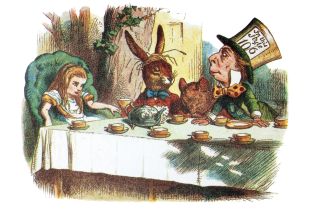Emotions
Why It Should Be All Right to Cry
It’s a nonverbal way our bodies ask for help and support.
Posted March 12, 2024 Reviewed by Abigail Fagan
Key points
- Vulnerability is a necessary component of intimacy, yet many societies view crying as a sign of weakness.
- Social constructs that label tears as weak, manipulative or excessive contribute to the stigmatization.
- The transformative power of tears has been portrayed throughout literature, philosophy, and popular culture.

“Those who do not weep, do not see.” ―Victor Hugo, Les Misérables
Before we can express our needs through language, we resort to crying to survive our infancy. As we go through life, we find other ways of getting our needs met—although crying continues to serve a critical role in regulating our emotions.
Fight, flight, or freeze responses are natural mechanisms to survive the stressors in our lives. In the face of overwhelming emotions, we might shut down or resort to secondary feelings such as anger to conceal our grief, pain, or sadness. However, without tears, we may not find the relief we need and stay angry, disempowered, stuck, or shut down. Learning how to tolerate vulnerability is crucial for mental health and allows us the courage to live the life we want and deserve.
Why Is There Stigma Surrounding Crying?
As our egos develop and as we become more in tune with social norms, we learn that crying is viewed as a sign of weakness. In most cultures, especially men, have been discouraged from being sad and encouraged to be mad instead. Many men have been raised with the notion that boys don’t cry and have been told to toughen up.
Even though vulnerability is a necessary component of human connection and intimacy, in many societies crying is viewed as an act that needs to be done in private, like using the toilet.
The same mirror neurons that make us yawn when someone else yawns make us feel like crying when someone else is crying. Thus, crying can activate empathy and affection from others, allowing us to feel connected and cared for, but it also can trigger uncomfortable feelings in others and lead to avoidance. The influence crying has on other people’s emotions can make it seem like a threat.
Another contributing factor to the stigma around tears may be our inclination to label tears as excessive, insincere, or fake. Because tears have the power to neutralize negative emotions such as anger or frustration, there are social constructs that view crying as a method of manipulation.
The Benefits of Crying
From a biological perspective, crying stimulates the production of endorphins, which are our body's natural painkiller and 'feel-good' hormones. When we are in a highly charged emotional state, crying helps to restore equilibrium by activating the parasympathetic nervous system, helping our body to rest and digest.
Attachment theory suggests that by showing vulnerability crying serves to strengthen social bonds and compels others to provide us with the compassion, support, and comfort we need. It’s a nonverbal way our bodies ask for help and support.
The Enigma of Tears
Humans enter the world crying and continue to shed tears for multiple purposes throughout their life span. From keeping our eyes lubricated, to relieving and communicating complex emotions, the act of crying is an intricate interplay of biology, psychology, and sociology.
“I wasn't crying about mothers," he said rather indignantly. "I was crying because I can't get my shadow to stick on. Besides, I wasn't crying.” ―J.M. Barrie, Peter Pan
Symbolism of Tears
In many tales, tears represent a passageway, an awakening, a surrender, and allow for transformation and new beginnings. In many stories, tears are transformative and lead to an awakening or breakthrough of some kind and symbolize a movement toward change and resolution.

In Alice in Wonderland, as Alice begins to feel distraught and overwhelmed by her loss of control, she cries a ‘pool of tears’, that leads to an awakening, a self-discovery where she learns how to empathize with others.
In Rumpelstiltskin, the miller’s daughter is trapped and has no idea how to fulfill her father’s promise to the king of spinning straw into gold. Engulfed by fear, she begins to cry. And Rumpelstiltskin appears to help her.
In many romance stories, tears symbolize the feelings of rejection, abandonment, and hopelessness of unattained love felt by the protagonist before they can embrace their vulnerability and find their happily ever after.
Many philosophers, including Aristotle, view tears as a mechanism to relieve emotional stress and cleanse the mind of pollution. This concept is understood as catharsis, in psychology. Albert Camus, the existentialist author, and philosopher, while examining the meaninglessness and absurdity of life alluded that the beauty of life is to “live to the point of tears,” suggesting that despite the meaninglessness, living our fullest lives, involves tears.
In more recent stories such as in the movie "Frozen," tears are used as a symbol of thawing out numbness and allowing to feel again. Elsa hadn’t allowed herself to grieve her parent’s death, which resulted in an eternal winter, where she became a prisoner of a self-created ice palace. But finally, when the emotions become too heightened, and the numb state is no longer conducive, she cries and embraces her sister, which leads her to connect to herself and find a way through her pain.
Tips for Crying Well
- Use mindfulness practices such as meditation and yoga to connect to your difficult emotions. Remember that these emotions can get intense before they calm down.
- Allow your heart to break open and trust your body’s way of emotional release. Remember that crying won’t last forever and once it’s past you will feel calmer and more relaxed.
- Dissolve self-pity or harsh criticism by giving yourself compassion and empathy.
- Listen to music that allows for nostalgia and self-reflection and serves as a bridge to your difficult emotional state.
- Consider talking to someone trustworthy, like a close friend or a therapist, to be a witness to your pain. If you prefer to cry alone, honor that desire and cry in the privacy of your room or the shower.
- Get curious about your feelings and use creative expressions such as journaling or painting to explore your inner landscape.
“Tears are a river that takes you somewhere…Tears lift your boat off the rocks, off dry ground, carrying it downriver to someplace better.” ―Clarissa Pinkola Estés
Facebook image: Just Life/Shutterstock
LinkedIn image: sruilk/Shutterstock
References
Barrie, J. M. (2014). Peter Pan. Puffin.
Buck, C., & Lee, J. (2013). Frozen. Walt Disney Studios Motion Pictures.
Burgess, L. (2023, July). Eight Benefits of Crying: Why It’s Good to Shed a Few Tears. https://www.medicalnewstoday.com/articles/319631
Carroll, L. (1993). Alice’s Adventures in Wonderland. Dover Publications.
Newhouse, L. (2021, March). Is Crying Good For You? https://www.health.harvard.edu/blog/is-crying-good-for-you-2021030122020
Vingerhoets, A. (2013) Why Only Humans Weep: Unravelling the mysteries of tears. Oxford Academic, Oxford.
Zelinsky, P. O. (1996). Rumpelstiltskin. Puffin.




